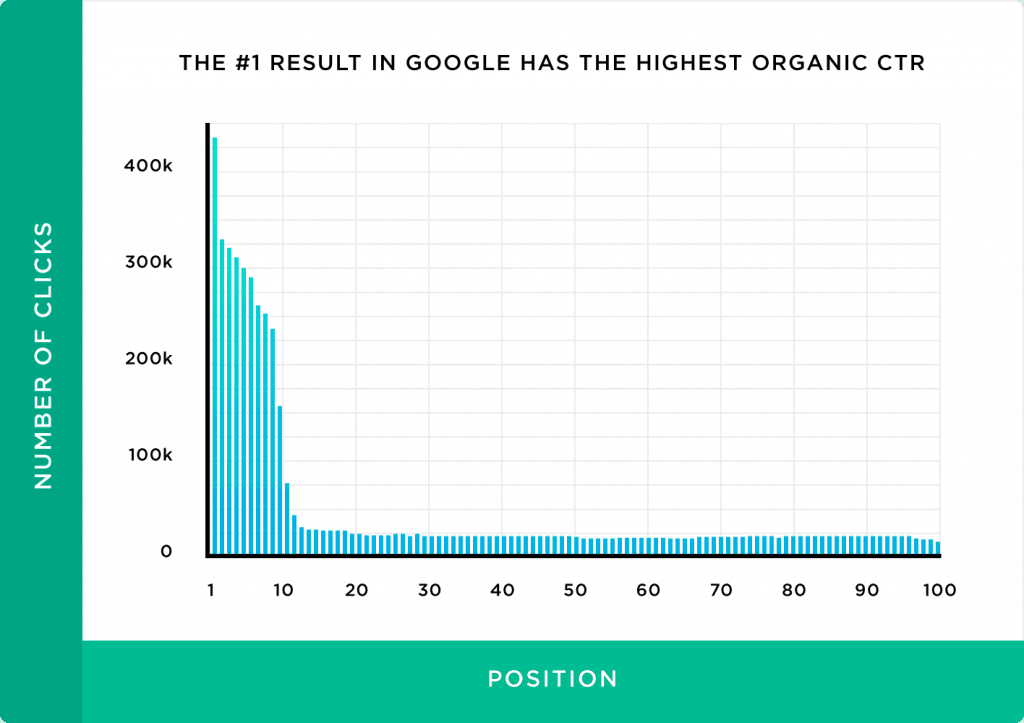SEO is key in any Digital Marketing strategy.
After all, who wouldn’t want to show up within the top organic search results on Google?
It’s where users find the most visible links, as well as those most frequently accessed by users.
Having a good SEO strategy can get you there!
Your site, blog, or eCommerce business becomes more well-known, resulting in authority in the market, a greater number of visitors, and increased conversion opportunities.
Best of all? You can achieve all of this without having to invest in paid advertising.
Through optimizations on your own pages and connecting to other sites, you can improve your users’ search and navigation experience.
With this complete guide to SEO, you’ll learn all you need to know to reach the top results on Google. We’ll cover the following topics.
What is SEO?
SEO, or Search Engine Optimization, is a set of optimization strategies for sites, blogs, and pages on the web, which aim to improve your position in organic search engine results.
Every second, millions of searches are being processed by search engines — mainly Google, the most popular search engine around the world.
Users are looking for answers to an incredible range of questions in their daily routine – from the best-rated hotel for an upcoming trip to an explanation of the theory of evolution.
For every search, Google organizes the results by ranking the best answers first. The numbers below show just how much users trust the judgment of search engines:
- The first three organic links receive approximately 30% of all click-throughs.
- Only 0.78% of users access a link on the second page of the results.
Take a look at the graph below to see the correlation between position ranking and the number of clicks:

Every search presents the opportunity for your brand to offer the best response to what users are looking for.
With this as your focus, you have a better chance to increase your visibility and clicks, receive more organic traffic, and escalate results with your online presence.
But, to achieve this, you need to prove to Google that you have the best answer and deserve to show up in the first position on the SERP (Search Engine Results Page).
This involves not just having great content, but offering usability, communicating marketplace authority, and helping Google read your pages.
These are the goals of an SEO strategy.
SEO also plays a role in SEM (Search Engine Marketing), which covers all search engine strategies, including paid ads and sponsored links.
On the other hand, SEO only makes use of organic strategies and doesn’t encompass media purchases. This results in a higher return on investment (ROI) and lower customer acquisition cost (CAC).
What are Search Engines?
Search engines are systems or algorithms used to crawl, index, and rank web content to display it in an ordered way based on user searches.
When we refer to search engines, we’re not just talking about Google, but also Bing, Yahoo!, Baidu and others.
Even YouTube and Pinterest can be thought of as search engines since they’re often used to discover content.
But Google is the clear category leader, with almost 92% of the search market share.
Each search engine has its own methodology and ranking criteria. But in the end, the goal is always the same: offering the best results for what users are looking for.
How do Search Engines Work?
Have you ever considered exactly what Google does when you search for something? Despite only taking milliseconds, there’s a long process to be able to display a list of results that answer your question.
In general, search engines have three stages:
First, search engines crawl through web content using bots, also known as spiders. At Google, it’s known as their Googlebot. These bots follow the connections of links across the web, searching for new and updated pages.
After that, the crawled pages are added to the search engine’s index, which serves as a vast library for the web’s content.
There, pages are organized according to the information the bot collected about them, such as loading time and keywords.
These processes of crawling and indexing are continuously taking place.
The bots are always finding and organizing the content on the web. But the order in which they display their results to users is defined through ranking.
Ranking occurs every time a user searches for something — this is the focus of SEO.
According to the keywords used in the search, Google quickly goes through its index to find pages that coincide with those terms and respond to the question.
Thus, classification is determined by the best relationship between keywords and a series of ranking factors that make up the search algorithm.
They serve to offer a better user experience and, as a result, increase your page’s position in the search results.
We will focus on these factors in detail below.

